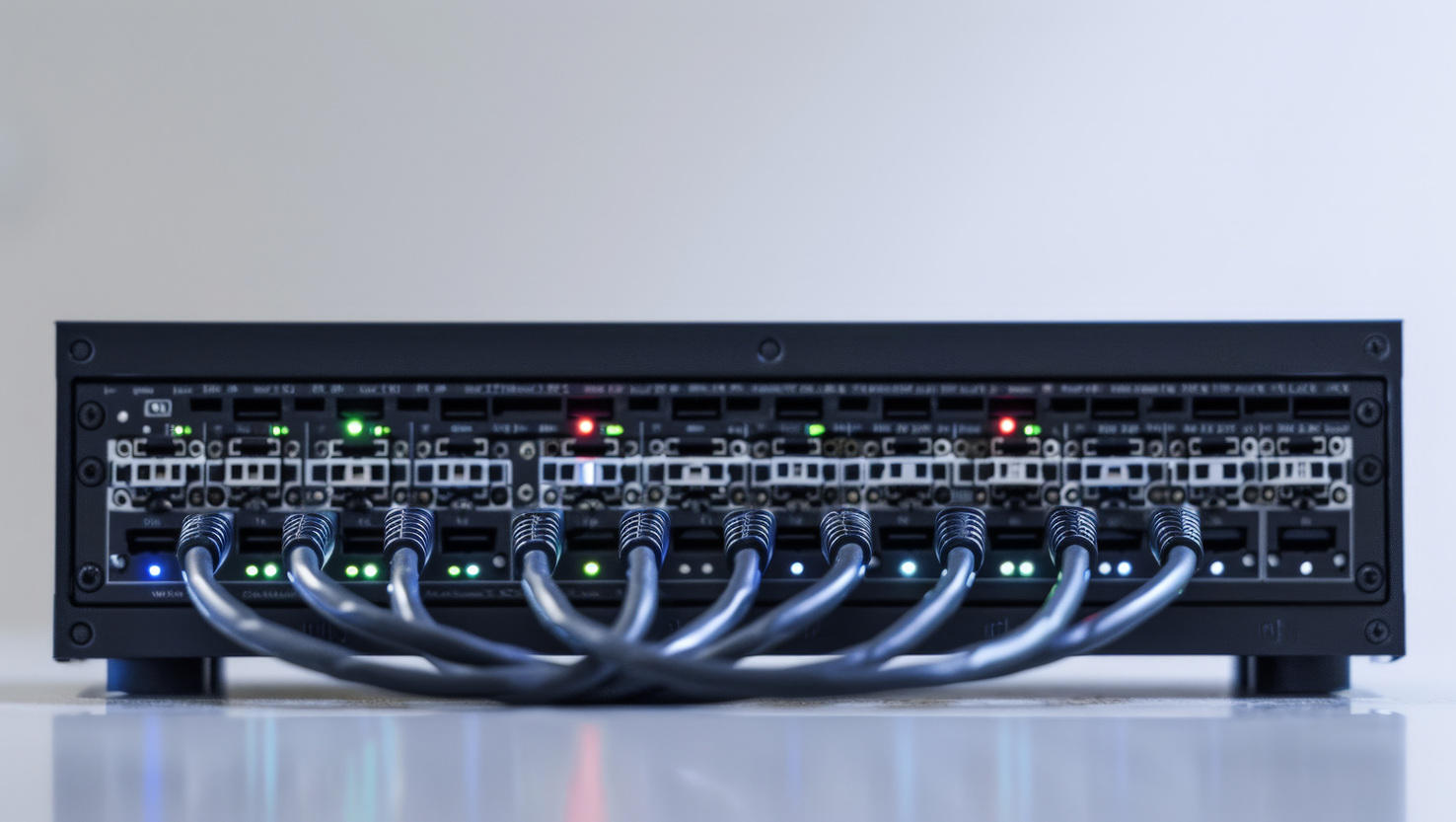Why Netflix, Zoom and Twitch Are Moving to AV over IP — and What It Means for All of Us

Streaming services, video conferencing platforms, and live-interaction companies like Netflix, Zoom, and Twitch are rapidly adopting AV over IP architectures. This transition reflects a broader industry move toward packetized media delivery, driven by the demand for scalability, flexibility, interoperability, and cost optimization. In this article, we explore the reasons behind this shift, the technologies enabling it, and what it means for media producers, enterprises, and end users.
Traditional point-to-point AV systems using HDMI or SDI are being replaced by IP-based infrastructures that leverage Ethernet networks. Recent industry data shows that a growing share of professional AV gear now includes native IP connectivity. More AV cameras, displays, switchers, and encoders ship with RJ-45 ports, and AV over IP has become a foundational concept across live production, enterprise environments, and content delivery.
In the case of Netflix, while its content delivery network operates at the CDN level, its internal AV workflows and immersive installations—like those in Netflix House experiences—rely on AV over IP technology. Internally, Netflix adopts IP-based video routing and remote production capabilities to enable globally distributed creative teams, virtualized editing systems, and cost-effective collaboration. Packetized transport allows seamless integration between video sources, displays, control systems, and cloud environments.
Zoom, widely known as a business communications tool, also operates on IP-based audiovisual infrastructure. Its ability to live stream to platforms like YouTube and Twitch relies on AV over IP protocols for encoding, transport, and delivery. Within enterprise environments, Zoom Rooms and large meeting deployments increasingly use AV over IP to route content between participants and endpoints dynamically, reducing the need for matrix switchers or HDMI cabling.
Twitch, the world’s leading live-streaming platform for creators and gamers, similarly operates on top of an IP-based AV core. In its own corporate environments—such as its production control rooms, broadcast suites, and hybrid events—AV over IP technologies provide the flexibility to manage content across multiple physical and virtual spaces. Low-latency routing, scalability, and standards-based interoperability make it possible for Twitch to deliver real-time, high-quality content at scale.
Technologies that support this shift include IP-based video transport protocols like SMPTE ST 2110, IPMX, NDI, Dante AV, and SDVoE. These standards allow audio, video, and metadata to be separated into discrete IP streams that can be independently routed, monitored, and processed. In addition, NMOS protocols like IS-04 (discovery and registration) and IS-05 (connection management) facilitate control and automation within AV over IP environments.
For companies like Netflix, Zoom, and Twitch, the benefits are significant. First, scalability becomes far more manageable—AV systems can expand without complete rewiring. Second, cost savings are realized through the use of standard network equipment instead of proprietary switching hardware. Third, workflows become more flexible and resilient, supporting hybrid operations with centralized control and decentralized resources. Fourth, integration with cloud services becomes more natural, as media streams are already IP-native.
From a technical standpoint, AV over IP enables:
- Real-time distribution of high-resolution video across standard Ethernet networks
- Support for ultra-low-latency transmission suitable for live production
- Centralized monitoring and diagnostics
- Dynamic signal routing without hardware limitations
- Seamless multi-site collaboration with cloud-assisted control
This evolution affects not only infrastructure but also how content is produced, edited, and delivered. Editors, directors, and engineers can collaborate across geographies using shared, virtual production environments. AV operators can manage entire events from remote locations, with video signals transmitted over secure, high-bandwidth IP networks.
However, the transition is not without challenges. Bandwidth management, latency control, jitter reduction, and network security all require careful planning. Engineers must select appropriate codecs, configure QoS policies, and monitor transport layers to ensure seamless operation. Migration from legacy HDMI or SDI workflows to IP involves both technical adaptation and organizational change.

Integrator and engineer questions
Integrators and AV engineers often ask detailed questions, such as:
- How does AV over IP ensure ultra-low latency in live streaming compared to HDMI?
- Can IP-based infrastructures like IPMX or SDVoE support Netflix-scale production environments?
- What network specifications are required for high-quality video conferencing using AV over IP?
- How can Twitch-like platforms manage AV routing across multiple locations in real time?
- What tools ensure QoS and reliability for enterprise AV deployments over general-purpose networks?
The answers lie in thoughtful system design, adherence to open standards, and leveraging proven architectures for AV signal processing, switching, and control. As the AV and IT worlds continue to converge, such knowledge becomes essential.
In summary, Netflix, Zoom, and Twitch are part of a broader shift toward AV over IP because it enables flexible, scalable, and cost-effective solutions for modern media and communications. This movement reflects a new era in AV design, one where networks—not cables—define the limits of possibility.
AV over IP is no longer a niche technology—it’s becoming the default. Whether in media production, corporate AV, education, or entertainment, the way forward is clearly IP-based. And what these streaming giants adopt today will influence how the rest of the world communicates tomorrow.
If you’re building an AV system or planning a migration from SDI or HDMI to IP, understanding this shift is essential. From selecting standards like IPMX or ST 2110 to integrating NMOS control layers, success depends on more than hardware—it requires a strategic understanding of how AV over IP changes everything.
Our Case Studies
